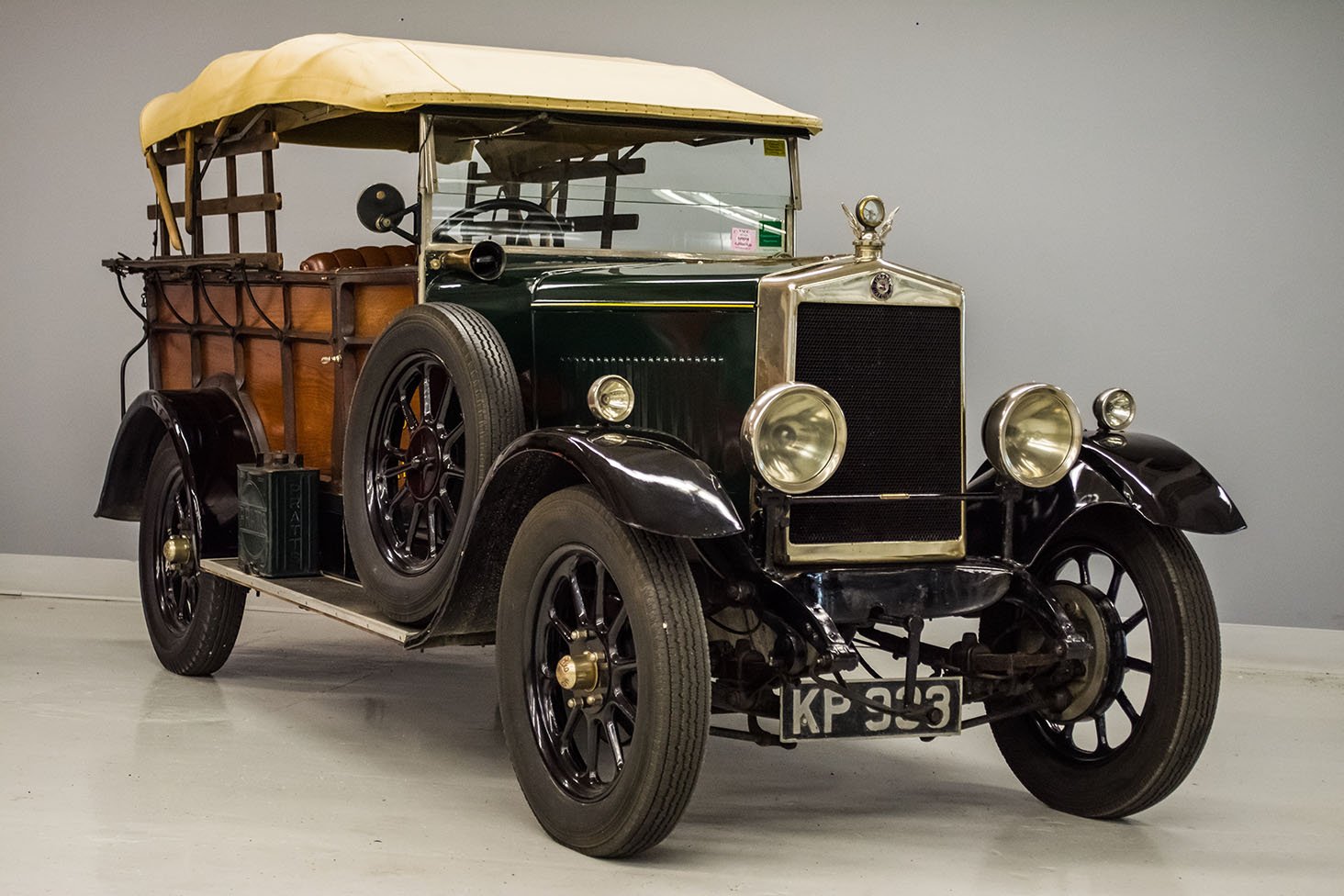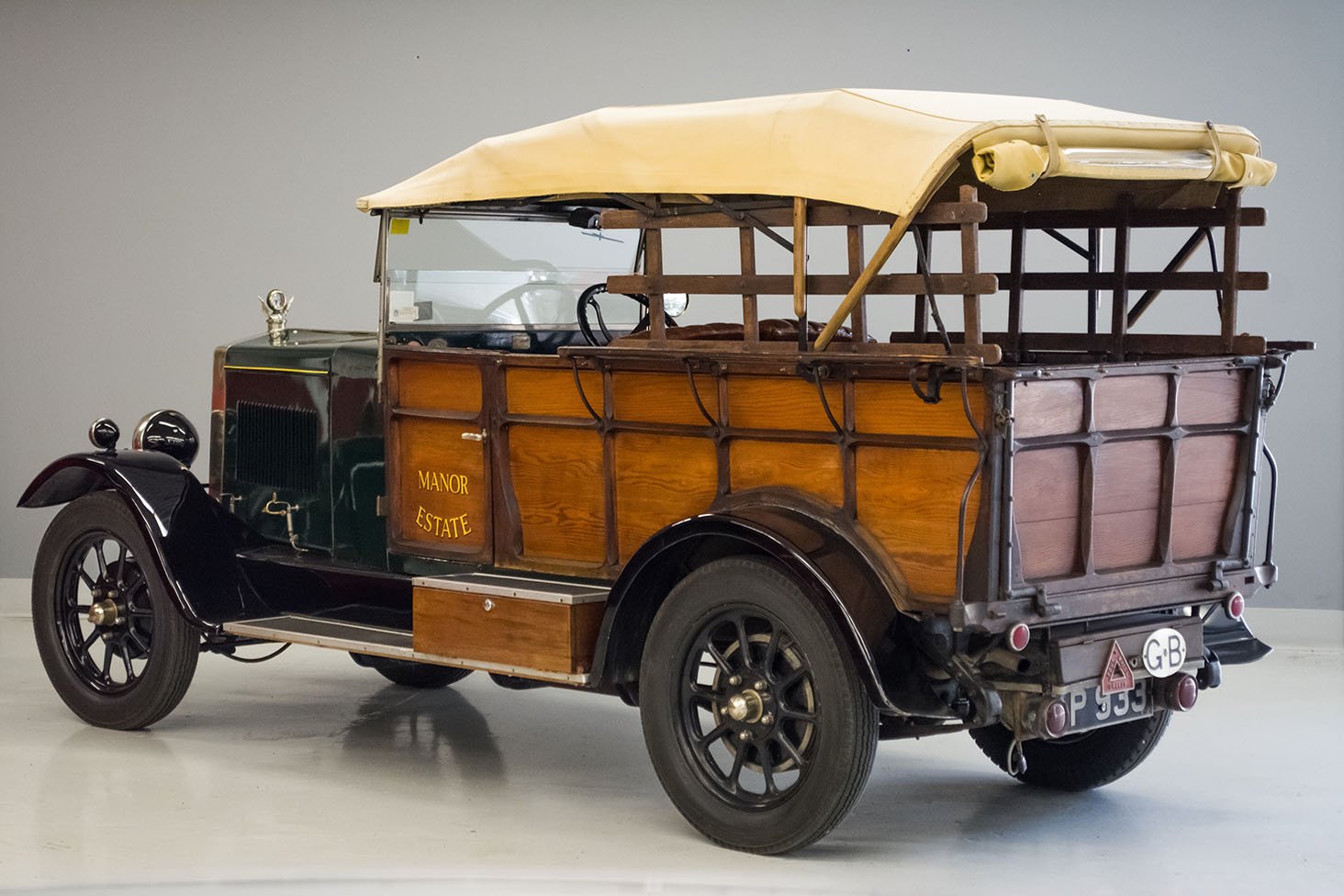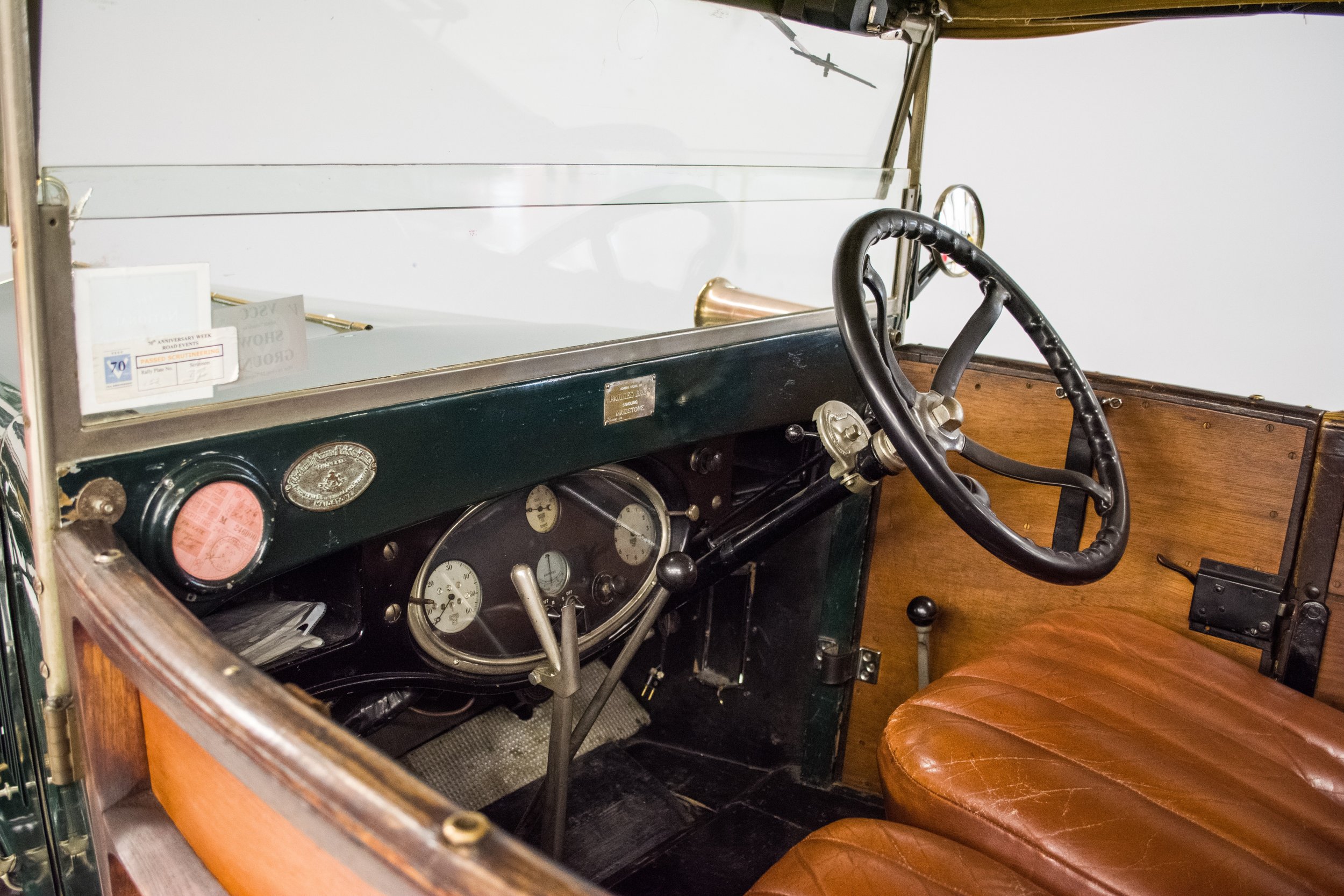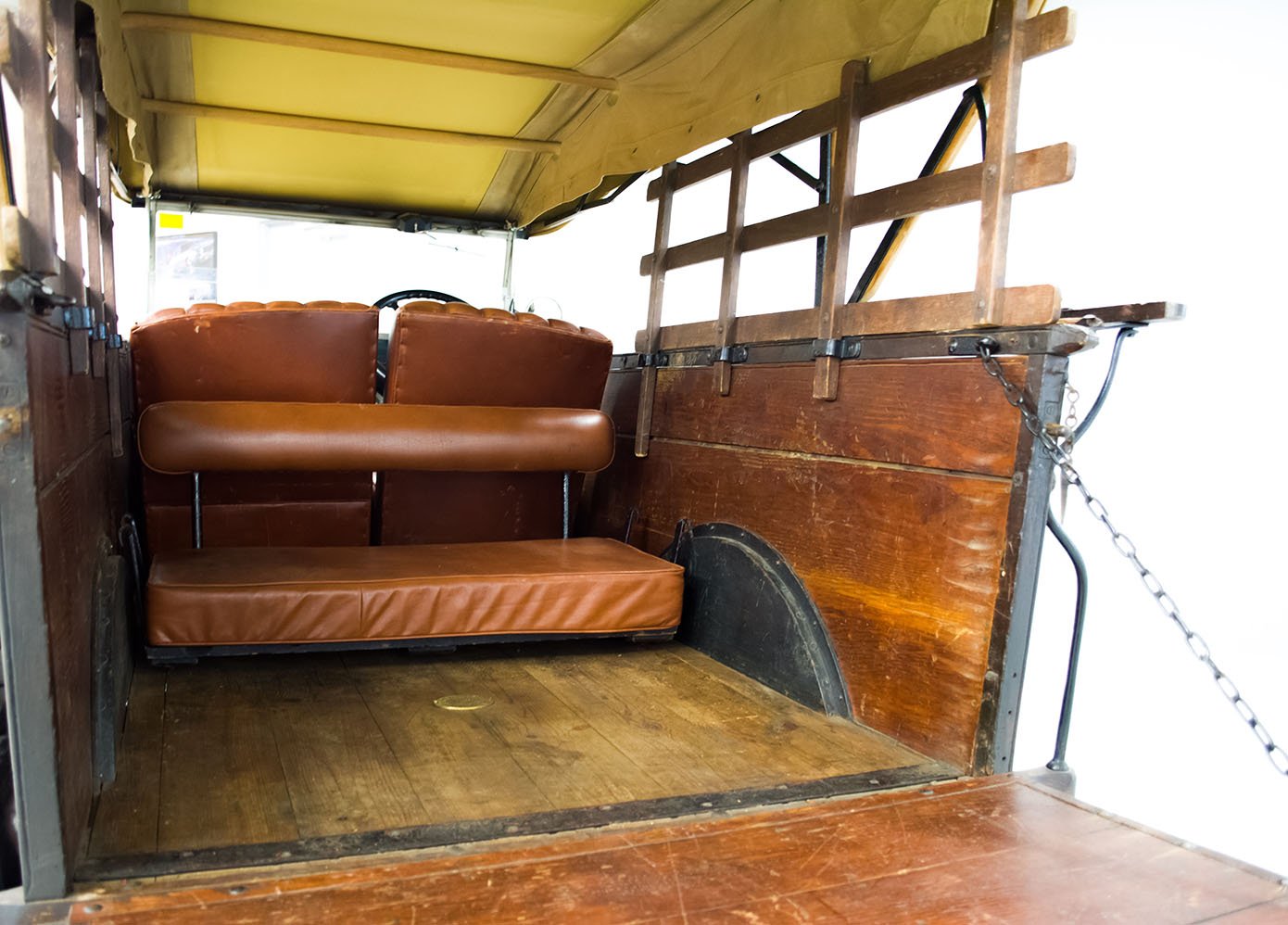1928 Morris Oxford Parkes Body Co.






Perhaps the only surviving example built by Parkes.
Useful farm vehicle with a durable wood body.
Configurable interior with a removable rear seat.
Production of William Morris’ first vehicle began in 1913, named after his home city. The car was designed in response to the affordable American vehicles which were quickly coming to market. In a similar fashion to the Model T Depot Hack on display, the utility coachwork seen on this Morris was not completed in-house, though unlike the Model T, only a handful of these wooden bodies were made by Parkes, and this is believed to be the only remaining example.
Even though the Oxford was a small vehicle for the period and was not originally built to carry more than two passengers, English coachbuilders like Parkes Body Company were able to transform the Oxford for use in other areas. This Oxford was sold new to Lady Mildmay-White, she used it for transportation around her estate. Like the Model T Hack on display, This Oxford represents an early form of the station wagon, a durable yet inexpensive form of 1920s transportation that made itself capable of many uses. The wooden bodywork was not built with style in mind, but instead, utility and farm work as cars like this tended to take a beating during their life. With a small rear-facing seat, two people could fit in the rear with room for other items, or the seat could be removed completely. This Oxford has complete weather equipment as well, with side and rear screens to protect riders from rain and wind.
The Oxford was one of the most popular British cars of the period, with nearly 170,000 Oxfords built between 1913 and 1926. They were assembled almost completely with “bought-in” parts, meaning Morris made almost none of the parts in-house to reduce the cost. Even though the Oxford was sold new for about £200, this did not mean they were built cheaply. In a 1914 article in the British periodical The Times, a columnist tested the Oxford and found very positive results. Among their comments, it was noted that it handled rough roads very confidently, had a quiet clutch and transmission, and had an overall comfortable ride despite its small size.
Specifications:
Engine: 1.8 Liter Inline 4-Cylinder
Horsepower: 14
Transmission: Three-Speed Manual
Brakes: 4-Wheel Mechanical Drum Brakes
Suspension: Solid Front and Live Rear Axles with Semi-Elliptical Leaf Springs

